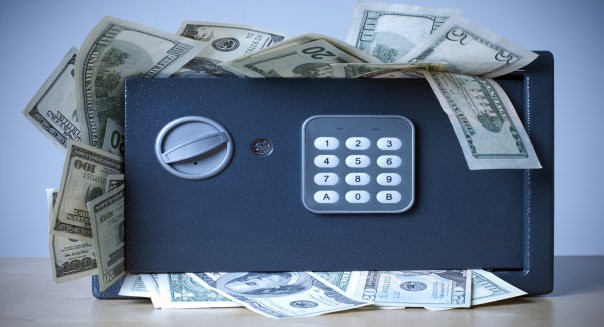4 Safe International Stocks with High Yields
Post on: 11 Июль, 2015 No Comment

There are several tenets to dividend-investing that income seekers should remember when stock-picking.
First and foremost, does the stock in question have any red flags that could mean a dividend reduction or suspension is on the horizon? In other words, how safe is the dividend?
Next, what’s the company’s dividend track record? Does it raise its dividend like clockwork every year or does it boost the payout one year and leave it alone for two or three years?
Those are just two questions income investors need to ask. Another is »Am I better off looking overseas for dividend stocks?» In many instances, the answer is a resounding »Yes.»
Investors that examine American Depositary Receipts (ADRs), which represent shares of foreign companies and trade on major U.S. exchanges, across any number of sectors are in for a pleasant surprise. There’s an excellent chance of finding at least one foreign stock that offers a better payout in dollar terms and perhaps a higher yield than a U.S. company in the same industry.
A primary component of dividend investing is safety. And with the right international dividend payers, U.S. investors are not sacrificing dependability and safety at all. Let’s take a look at four safe global dividend stocks.
1. Royal Dutch Shell (NYSE: RDS-A. RDS-B)
Royal Dutch Shell is Europe’s largest oil company.
Here are the vitals on Shell: The ADRs currently yield 4.8%, and the annual payout in dollar terms is $3.36 a share. Shell’s current yield is double that of Exxon Mobil’s (NYSE: XOM ). and far superior to Chevron’s (NYSE: CVX ) 3% yield. Shell’s payout bests the U.S. oil giants on a dollar basis as well.
Shell has the cash on hand ($6.24 a share) to at least maintain its current dividend level, and the dividend has doubled twice since 1988. One quibble: Shell hasn’t raised its dividend since 2009.
2. Nestle (NSRGY.PK)
Don’t be alarmed by the fact that Nestle, the world’s largest food company, trades on the Pink Sheets. It’s not unusual for foreign companies, even large ones, to do this in order to avoid the costs associated with listing on a major U.S. exchange.
With that housekeeping item out of the way, compare Nestle to the most logical U.S.-based equivalent, which would be Dow component Kraft (NYSE: KFT ). Nestle’s current payout ratio is just north of 55% while Kraft’s is 67%. The Swiss company has also dramatically slashed its debt to about $16.6 billion at the end of June from almost $34 billion a year earlier. Kraft has $23.4 billion in long-term debt.
In the past five years, while Kraft shares are basically flat, Nestle is up almost 70%. Given that both stocks yield roughly the same at just under 3.5%, Nestle could be the better investment, if history is any guide.
3. France Telecom (NYSE: FTE )
Telecom stocks are prized for both good dividends and being defensive plays. U.S. telecom behemoths AT&T (NYSE: T ) and Verizon (NYSE: VZ ) have an average yield of 5.65%. That’s pretty good. It’s also 2% less than what France Telecom offers. That’s part of the good news, but there are some issues to consider before jumping straight into France’s largest telecom company.
First, the French government owns almost 27% of France Telecom. Second, the company pays its dividend semi-annually, exposing it to fluctuations in the euro. On the other hand, France Telecom has an emerging markets story that isn’t recognized all that much by Wall Street. The company has a foothold in emerging European markets such as Poland and other Eastern European countries. The company also has a presence in 13 African nations, according to the Financial Times. And with a dividend payout ratio in the mid-40s, the company is generating ample cash flow to cover its dividend obligations.
4. BHP Billiton (NYSE: BHP )
BHP Billiton is the world’s largest mining company, becoming so by acquiring companies in the industry left and right. Many U.S. investors have probably heard of the Anglo-Australian mining giant, however, they might not think of this as a good dividend stock because many U.S.-based materials and mining stocks don’t offer great payout.
While BHP’s yield of 2.9% isn’t jaw-dropping, the stock meets important dividend qualifications. In terms of growth, BHP’s twice-yearly dividend was $0.31 a share in 2002. This year it was $2.02. The company had $16.6 billion in cash and short-term investments as of July 2011, and a payout ratio of 21% shows there’s room for dividend growth without hampering BHP’s cash hoard.
Risks to Consider: All dividend investors looking at foreign stocks must remember currency fluctuations can impact the dividends paid, either positively or negatively. Plus, a weaker U.S. dollar means stronger currencies in the homes of foreign companies, and that hurts export dependent businesses. In the case of Shell and BHP Billiton, these stocks reside in high-beta sectors that are dependent on a thriving global economy to drive returns.
Action to Take—> This quartet is a diverse portfolio in its own right, but conservative investors should definitely lean in favor of Nestle, then France Telecom. The most adventurous souls can cozy up to BHP, while those with some tolerance for risk will find Shell is somewhere in the middle in terms of risk profile for this group of stocks.














